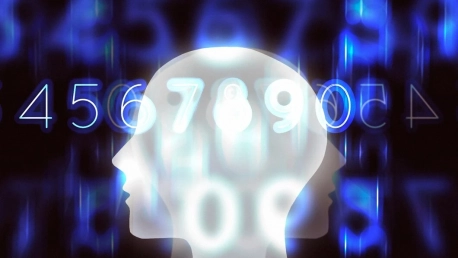As AI’s vast capabilities unfold in 2024, understanding the diverse range of AI types and their impacts is crucial for professionals and businesses. AI is deeply integrated into various domains, altering our daily routines. Knowledge of its different forms, strengths, and future developments is not a luxury but a necessity. It’s vital to uncover how AI-driven tech trends correlate with their application in the ever-evolving landscape of modern industries.This AI enlightenment empowers us to negotiate the intricate relationship between innovative tech breakthroughs and their real-world implementation. Our era is marked by an AI revolution, and grasping its nuances is fundamental for those seeking to thrive in a digitally augmented reality. The task at hand is to delineate and understand AI’s broad framework to remain at the forefront of this transformative journey.
Types of AI Based on Capabilities
Narrow AI, sometimes depicted as Weak AI, boasts precision and efficiency in well-defined domains, such as voice assistants or recommendation systems, honing its prowess in singular, repetitive tasks. In contrast, General AI, or Strong AI, though yet to be achieved, teases a future where machines will rival the multifaceted intelligence of humans—adapting, understanding, and innovating without bounds. Superintelligent AI looms over the horizon, a vertex where AI potentially eclipses human intelligence, promising or foreboding an era of unprecedented change.The journey from specialized to sentient AI marks a transition from a tool-centric approach to one that is perhaps indistinguishable from human capability. While the current bounds of technology have yet to rear a true General AI, the strides made with Narrow AI have been formidable, infiltrating industries with bespoke solutions. Superintelligent AI remains lodged firmly in theoretical realms, stirring equal parts concern and intrigue regarding the future coexistence of man and machine.
Functionality-Based AI Categorizations
Functionality propels AI from basic reactive machines—with their stimulus-bound computations and absence of historical footprints—to autonomous vehicles and assistants that draw upon a reservoir of past data to inform their present actions. As AI progresses, the Limited Memory paradigm suffices to create experiences that feel interactive and personal, a testament to AI’s growing sophistication in threads of everyday life.Yet, the zenith of AI functionality, Theory of Mind and Self-Aware AI, remains an odyssey in progress. These ambitious AI archetypes strive for a realm where machines not only process but comprehend the intricacies of human emotions and mental states, bringing an empathetic dimension to machine interaction. Such AI would unravel complexities beyond the reach of programmed responses and data-driven logic, tapping into the cerebral symphony that orchestrates human consciousness.
Technological Classifications of AI
Technological advances strew the bedrock on which AI stands today. Machine Learning (ML), an ubiquitous cornerstone, derives patterns and insights to fuel predictive models, while Deep Learning, through its profound neural networks, excels in discerning subtleties in massive datasets, powering advancements in image and speech recognition. These techniques form the heart of modern AI, relentless in their evolution, learning from the troves of data they encounter.Natural Language Processing (NLP) forges yet another critical bridge, rendering language—a uniquely human trait—into a format interpretable and responsive to machines. This domain continues to shatter barriers of interaction, making the seemingly complex dance of human-computer dialogue not only possible but increasingly seamless. As AI intertwines deeper with our lives, its language understanding becomes an ever more essential tool in the continuum of technological integration.
Branches of AI Research and Applications
The branches of AI research burgeon, each enrooted in solving a distinct slice of the technological puzzle. Machine Learning algorithms have cemented their importance in modern tech, from the mundane act of filtering spam to empowering visionary technologies in medical diagnostics. Similarly, Deep Learning has transformed what machines can perceive, distilling nuance and meaning from a mosaic of pixels and waveforms.Natural Language Processing (NLP) translates the cadence of human speech and the labyrinth of written text into a lexicon navigable by AI. Concurrently, Expert Systems echo human decision-making processes, casting AI in roles once exclusive to specialists. Together, these branches of AI form a robust canopy under which solutions to substantive, complex, and diverse problems burgeon.
AI Evolution and Key Trends
AI evolution is marked by an inexorable quest for autonomy, a pursuit of algorithms that not only think but learn and adapt independently. This endeavor has progressively lifted AI from rule-based confines to data-driven autonomy where pattern recognition, adaptive learning, and predictive capabilities are paramount. As AI continues to drink from the rich chalice of big data, its predictive acumen grows ever sharper, charting courses into previously unfathomable terrains.The lingering question of self-aware AI hangs in a delicate balance between philosophical inquiry and technological pursuit. Yet, the immediate future is firmly grounded in the tangible enhancements of Machine Learning, Deep Learning, and NLP. These technologies stand at the forefront of AI research, promising a future wrought with smarter, more adaptable, and increasingly intuitive artificial intelligences.
The Indispensability and Future Prospects of AI
The ramifications of AI’s expansion are profound. Industries have been transformed, and tasks that were once onerous have been streamlined if not entirely supplanted by AI-driven processes. The indispensability of AI lies not only in its current capabilities but also in its unparalleled potential—a potential that stretches the canvas of innovation across a future where intelligent systems may stand shoulder to shoulder with human intellect.The burgeoning landscape of AI is painted with the colors of potentiality, envisioning machines that not only assimilate information but also wield it with the dexterity of experience, learning, and a hint of independence. The inexorable march toward more sophisticated AI solutions promises a new epoch where intuition and learning meld harmoniously, crafting a future as intriguing as it is inevitable.









